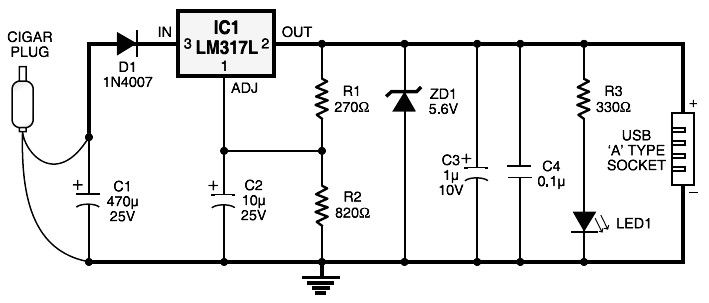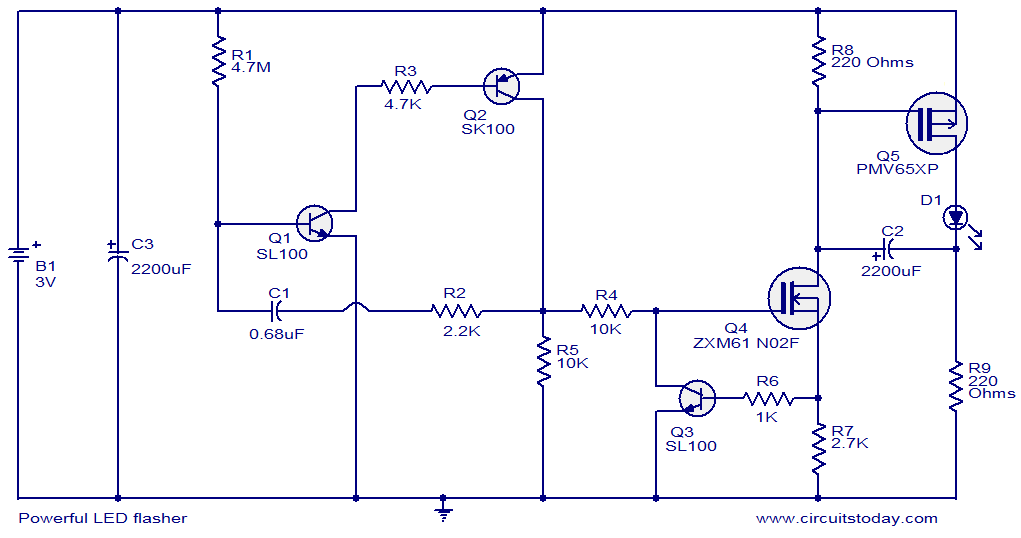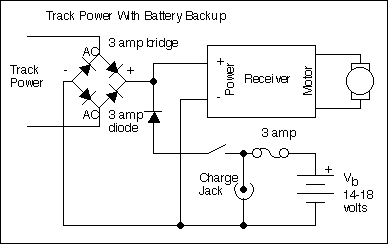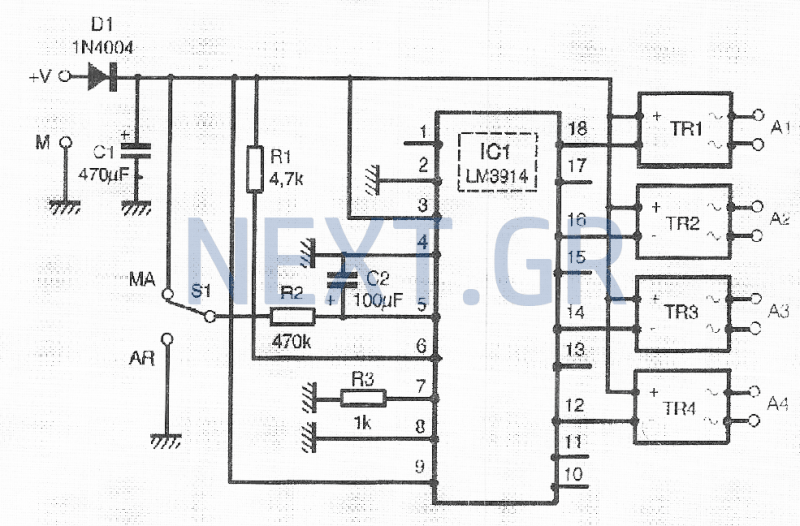
Alarm Power Supply

This power supply is suitable for a modular burglar alarm but can also serve other applications. It is designed to provide a 12-volt output with a current capacity of up to 1 amp. In case of mains failure, the backup battery automatically takes over. When mains power is restored, the battery recharges. It is recommended to use a genuine alarm-type backup battery, which is maintenance-free and can maintain a terminal voltage of 13.8 volts for many years without adverse effects. A battery of smaller or larger capacity can be utilized without requiring circuit modifications. The design incorporates a 2-amp version of the 7805 voltage regulator, which necessitates a larger heatsink due to the substantial energy dissipation, particularly when recharging a depleted battery. The heatsink operates at 9.1 volts and must not be connected to ground. The 7812 voltage regulator typically dissipates no more than 2 watts, allowing for a smaller heatsink. Many components depicted lying flat on the board are actually mounted in an upright position. The links are made of bare copper wire on the component side. The heatsinks consist of folded strips of aluminum, approximately 2 mm thick. A well-insulated, panel-mounted fuse holder should be used for the mains supply to the transformer, equipped with a 1-amp fuse.
The power supply circuit is structured to ensure reliable operation within a modular burglar alarm system. The primary output voltage of 12 volts is regulated by the 7812 voltage regulator, which provides a steady voltage to the alarm system, ensuring optimal functionality. The 7805 voltage regulator, rated at 2 amps, is critical for managing the charging of the backup battery. Its larger heatsink is essential for efficient thermal management, particularly during the charging phase when the battery is significantly discharged.
In the event of a power outage, the circuit's design allows for seamless transition to the backup battery, ensuring that the alarm system remains operational. The choice of a maintenance-free alarm-type battery is crucial, as it guarantees longevity and reliability, with a terminal voltage that remains stable over time.
The layout of the components on the PCB is designed for efficient heat dissipation and ease of access for maintenance. The use of bare copper wire links on the component side minimizes resistance and enhances connectivity, while the aluminum heatsinks effectively manage the thermal load generated by the voltage regulators.
The inclusion of a panel-mounted fuse holder with a 1-amp fuse serves as a protective measure for the mains supply, safeguarding the circuit against overcurrent situations. This design consideration is vital for ensuring the longevity and reliability of the entire power supply system. Overall, the power supply circuit is engineered to meet the demands of a modular burglar alarm while providing flexibility for other applications, maintaining high standards of performance and safety.This Power Supply is suitable for the Modular Burglar Alarm. However, it has other applications. It is designed to provide an output of 12-volts, with a current of up to 1-amp. In the event of mains failure, the back-up battery takes over automatically. When the mains is restored, the battery recharges. Use a genuine alarm type back-up battery. Th ey are maintenance-free, and their terminals can be held at 13v8 for many years, with no ill effects. A smaller or larger capacity battery may be used, without circuit modification. Use the 2-amp version of the 7805. It needs the larger heatsink because it has to dissipate a lot of energy, especially when called upon to recharge a flat battery.
This heatsink is at 9v1, and must NOT be connected to ground. The 7812 never has to dissipate more than 2-watts, so its heatsink can be smaller. Many of the components, which are shown lying flat on the board, are actually mounted upright. The links are bare copper wire on the component side. The heatsinks are folded strips of aluminium, about 2mm thick. Use a well-insulated panel mounted fuse holder for the mains supply to the transformer, and fit it with a 1-amp fuse 🔗 External reference
The power supply circuit is structured to ensure reliable operation within a modular burglar alarm system. The primary output voltage of 12 volts is regulated by the 7812 voltage regulator, which provides a steady voltage to the alarm system, ensuring optimal functionality. The 7805 voltage regulator, rated at 2 amps, is critical for managing the charging of the backup battery. Its larger heatsink is essential for efficient thermal management, particularly during the charging phase when the battery is significantly discharged.
In the event of a power outage, the circuit's design allows for seamless transition to the backup battery, ensuring that the alarm system remains operational. The choice of a maintenance-free alarm-type battery is crucial, as it guarantees longevity and reliability, with a terminal voltage that remains stable over time.
The layout of the components on the PCB is designed for efficient heat dissipation and ease of access for maintenance. The use of bare copper wire links on the component side minimizes resistance and enhances connectivity, while the aluminum heatsinks effectively manage the thermal load generated by the voltage regulators.
The inclusion of a panel-mounted fuse holder with a 1-amp fuse serves as a protective measure for the mains supply, safeguarding the circuit against overcurrent situations. This design consideration is vital for ensuring the longevity and reliability of the entire power supply system. Overall, the power supply circuit is engineered to meet the demands of a modular burglar alarm while providing flexibility for other applications, maintaining high standards of performance and safety.This Power Supply is suitable for the Modular Burglar Alarm. However, it has other applications. It is designed to provide an output of 12-volts, with a current of up to 1-amp. In the event of mains failure, the back-up battery takes over automatically. When the mains is restored, the battery recharges. Use a genuine alarm type back-up battery. Th ey are maintenance-free, and their terminals can be held at 13v8 for many years, with no ill effects. A smaller or larger capacity battery may be used, without circuit modification. Use the 2-amp version of the 7805. It needs the larger heatsink because it has to dissipate a lot of energy, especially when called upon to recharge a flat battery.
This heatsink is at 9v1, and must NOT be connected to ground. The 7812 never has to dissipate more than 2-watts, so its heatsink can be smaller. Many of the components, which are shown lying flat on the board, are actually mounted upright. The links are bare copper wire on the component side. The heatsinks are folded strips of aluminium, about 2mm thick. Use a well-insulated panel mounted fuse holder for the mains supply to the transformer, and fit it with a 1-amp fuse 🔗 External reference





